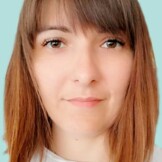- unilabs.sk - pediculosis
- ruvzds.sk - Pediculosis
- uvzsr.sk - ÚVZ SR: Hygiene and discipline concern lice
- amedi.sk - Pediculosis in children
- nurse.sk - Pediculosis
- ealth.harvard.edu - Head lice
- Gratz N. G., Human head lice, their prevalence, control and re sistence to insecticides. A review 1985-1997, WHO/CTD/ WHOPES, 1997; 8: 1 - 61.
- Rupes V., Vlčková J., Pediatric lice, pediculosis and deworming options, New Journal of EU Medicine, ISSN 1802-1298.
- Benes J. et al, Infectious medicine. J., Infectious diseases. Galen, 2009, pp. 368 - 369. ISBN 9788072626441.
- Štork, J. et al, Dermatovenerology. 1st edition Prague: Galén, 2008. 502 p. ISBN 978-80-7262-371-6.
- Burgess I. F., Brown C. M., Lee P. N., Treatment of head louse infestation with 4% dimethicone lotion: a randomized controlled e quivalence trial. British Med. J. 2005, 330, pp. 1423-1425.
Pediculosis: How do lice manifest themselves and what do they look like? What helps against them?
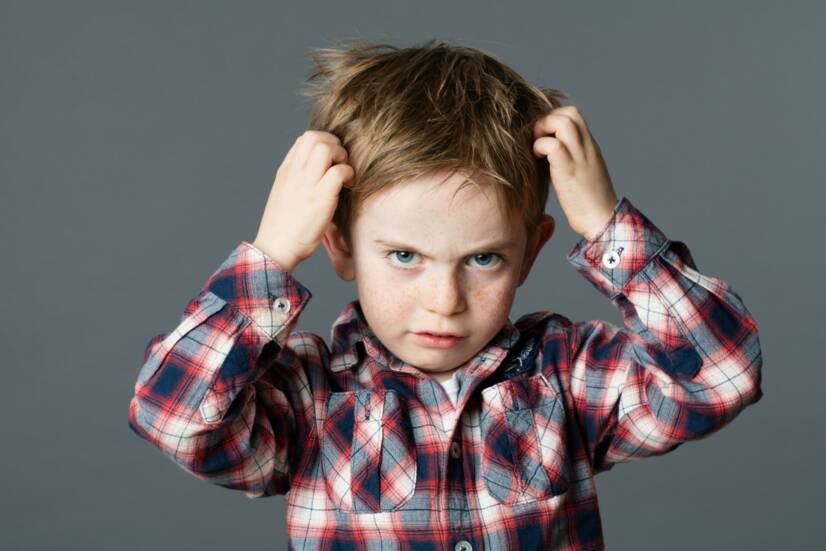
Pediculosis is a contagious and infectious disease that most commonly occurs in school-age children. Lice attach to a person's skin, lay eggs (nits) and reproduce. The disease manifests itself by itching.
Most common symptoms
- Malaise
- Skin pain
- Fever
- Rash
- Petechie
- Concentration disorders
- Buds
- Itchy skin
- Itchy scalp
- Reddened skin
- Enlarged lymph nodes
- Increased body temperature
Characteristics
Pediculosis is an infectious and transmissible parasitic disease caused by a parasite - a louse. It is transmitted by close body contact, i.e. from person to person. If a child suffers from it, he/she must not attend school or kindergarten and must be treated.
It occurs worldwide and affects people of all ages, but especially children. The causative agent of pediculosis, the child louse (Pediculus capitis), is a blood-feeding alien parasite. The louse is only able to parasitise humans.
The child louse is not involved in the transmission of pathogens. The higher incidence of child lice is due to infected children not being dewormed in time and at the necessary intervals.
The problem is not lice. The problem is persistence in a state of lice and neglect of cleanliness.
Causes
What do I need to know about the causes of head lice?
What is a louse? What causes pediculosis?
The causative agent of pediculosis is the childhood louse (Pediculus capitis). It is an alien parasite that feeds on the blood of the host and is only able to parasitize humans. It parasitizes in the hair, but can also be in the eyebrows, beard and chin.
Lice are perfectly adapted to this life. They have a special claw on their leg which they can bend against the leg and firmly grasp the hair or hairs they are crawling on.
The lice become resistant to dewormers.
It's transmitted by contact. Because it can swim, it's theoretically possible to catch it in a swimming pool. It can also be picked up from headphones, upholstered chairs and armrests or from bedding and clothing.
The baby louse has a mouthparts adapted for stinging and sucking. It feeds on blood flow. In natural conditions, it ingests food every 2 to 3 hours.
The louse feeds on human blood by sucking.
The females lay 3-4 eggs (nits) on the roots of their hair and on their clothing with a hard, virtually insoluble putty. The size of lice usually varies between 2 and 5 mm. This allows them to be observed with the naked eye. The male reaches a size of 2 to 3 mm, the female 2.9 to 3.5 mm.
The eggs hatch into larvae (13-19 days at 25 °C, 7-14 days at 30 °C).
Depending on the temperature, the development of lice from eggs through the larval stages to adults takes an average of 20 days (18-22 days at 28-30 °C, 14-15 days at 37 °C).
The eggs (nits) remain on the hair even after the lice have hatched. They are only a cosmetic defect but can cause misdiagnosis and lead to unnecessary and repeated application of deworming products.
Live nits are yellow-white, 0.8 x 0.3 mm in size and translucent after hatching. There is a cap at the top of the nit. Through the cap, the hatched louse comes out.
Adult females live on average 3 weeks and lay about 100-140 eggs in their lifetime.
The source of infection is always the person who has the lice. From the infested source it is possible to transmit the infection to a new host from the beginning of the infestation until the time of its elimination. In most cases the number of crawling lice does not exceed 10 in the hair.
Head lice are found all over the head, but especially on the hair, in the temple area, on the nape of the neck and around the ears, where they most often lay their eggs.
Lice on hair permanently shorter than 1 cm are unable to survive.
Head lice are spread in the human population mainly by direct contact, physical contact of heads, mostly in collectives (family, pre-school and school facilities, hostels).
The environment outside the human hair is very unfavourable for the child louse, so the louse does not voluntarily leave the hair.
Fleeting head contact is generally insufficient for transmission. No other mode of transmission has yet been demonstrated.
The lifespan of head lice is relatively short, usually only 30 days. However, during this time a single louse will lay dozens to hundreds of nits, which continue to multiply.
About 20 years ago, the World Health Organization (WHO) estimated that approximately 370 million people, mainly children, are infested with childhood lice (Pediculus capitis) annually worldwide.
Does the prevalence of head lice depend on the season?
Head lice are most acute in autumn, when children return to school from holidays. The incidence of head lice is also higher in winter.
This is probably due to the fact that, especially in winter, children wear and exchange headgear during play, which can carry lice. In summer, hats are not worn and hair is cut more.
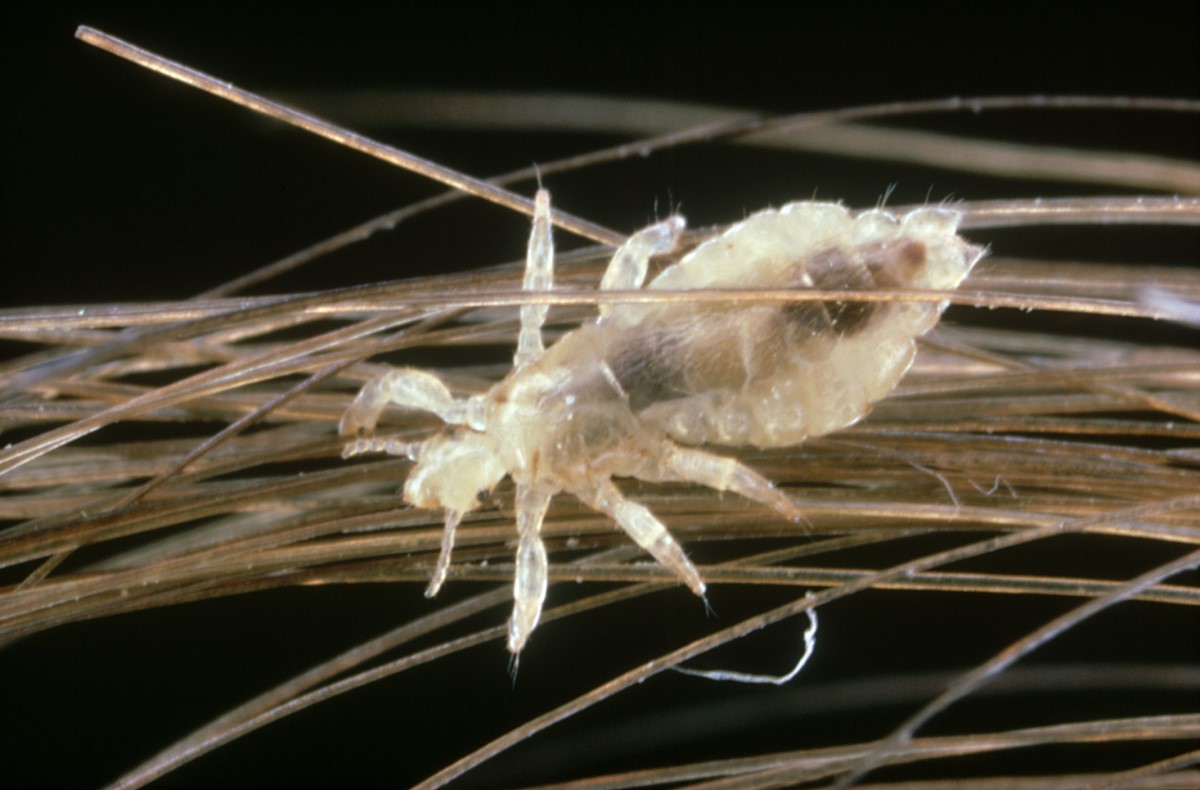
Symptoms
How do lice manifest in hair? How do I know I have lice?
For the first 30 days, the disease usually does not manifest itself in half of the cases of infection, because the lice are just beginning to multiply.
However, by that time the skin is already itching and burning due to the bites and sucking of the blood that the lice feed on.
Petechiae and papules appear where the lice suck blood.
People with long-term infestations also develop complications with skin inflammation and general restlessness or sleep disturbances.
With long-term head lice infestation, significant changes from scratching can occur in the form of linear excoriations (scratches), which can be complicated by further infection and the development of eczema.
Main symptoms:
- itching of the scalp - lice are attracted to the skin
- scratches on the skin
- restlessness
- nervousness
- sleep disturbances or insomnia
- disturbances in concentration
Elevated body temperature and enlarged lymph nodes are sometimes seen as a result of the main symptoms, especially if inflammation occurs due to skin lice.
Adult and dead lice can also be found by looking closely at hair, skin or clothing and their eggs when enlarged.
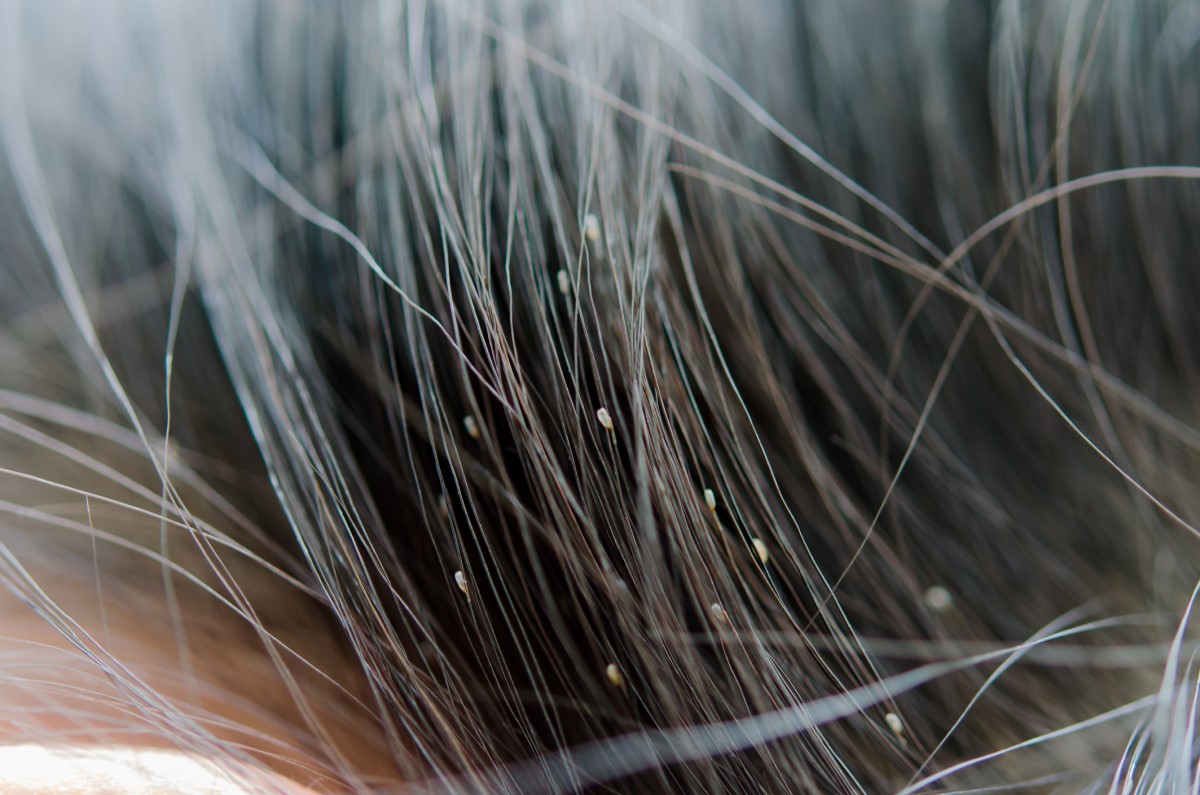
Diagnostics
Pediculosis is indicated by a strong itching of the affected part of the head and the finding of lice or nits. Lice are only found in the hair, where both crawling adults and nits can be observed.
The nits, which look like tiny light dots, stick to the hair.
They are first found in the temple area behind the ears. Nits stick very firmly to the hair and cannot be easily removed.
Pediculosis is a disease classified as B85 in the International Classification of Diseases.
Differential diagnosis
The main symptom of head lice infestation is pruritus (itching), which forces the individual to scratch constantly.
The differential diagnosis should exclude skin diseases (eczema, prurigo, seborrhoeic dermatitis, psoriasis), other parasitoses (scabies), possibly mycoses and candidiasis or systemic disease.
The typical symptom confirming pediculosis is the finding of live lice or nits in the scalp.
Pediculosis capitis - The diagnosis is made on the basis of severe itching in the scalp and evidence of adult lice or nits.
Pediculosis corporis - Finding lice and nits on clothing, crawling all over the body and especially in areas of clothing closely adjacent to the body.
Pediculosis pubis - Evidence of grey-blue patches usually in the genital area or evidence of adult lice or nits.
A thorough examination of the hair is used to diagnose lice, looking for nits and lice. The characteristic place to find nits is mainly the part of the head behind the ears and in the temple area at the nape of the neck.
The only reliable evidence of ongoing lice infestation is the finding of live crawling lice. In cases where the eggs (nits) on the hair are less than 8 mm from the skin, the presence of live crawling lice is likely.
Lice can be found by visual inspection of the hair in good lighting.
How to comb out lice?
The more sensitive method of diagnosis is dry combing. The reliability of this method is about 87%.
Wet combing is even more sensitive. The hair is first slightly moistened with shampoo and conditioner. This will immobilise the lice and make them easier to comb out.
In both cases, it is necessary to use a dense comb (a detangling comb) that has a distance between the teeth of 0.2-0.3 mm.
Instructions for wet combing:
- First, comb the wet hair with a regular comb to remove knots and tangles.
- Use a hair conditioner or olive oil to help detangle the hair with a fine fork comb.
- Comb the lice through white paper laid on a table. Keep your head bent and start at the nape of your neck.
- Comb through all the hair with a fine forked comb. Pull the comb from the scalp to the ends of the hair. After each individual combing, check and wash the comb. Use an old toothbrush to remove lice and nits from the comb and rinse them in the sink. Comb through all the hair at least twice and wash off any lice found. Then rinse the conditioner or oil from the hair.
- Combing should be done until the first few lice fall out, or for 5 minutes. If even after this time the lice are not combed out, the child can be considered a negative child without lice. Combing should be done every 3-4 days for 2 weeks.
- Symptoms of itching may persist even without the presence of lice for a week after removal.
Recipes for the preparation of mixtures for the removal of lice: What will help?
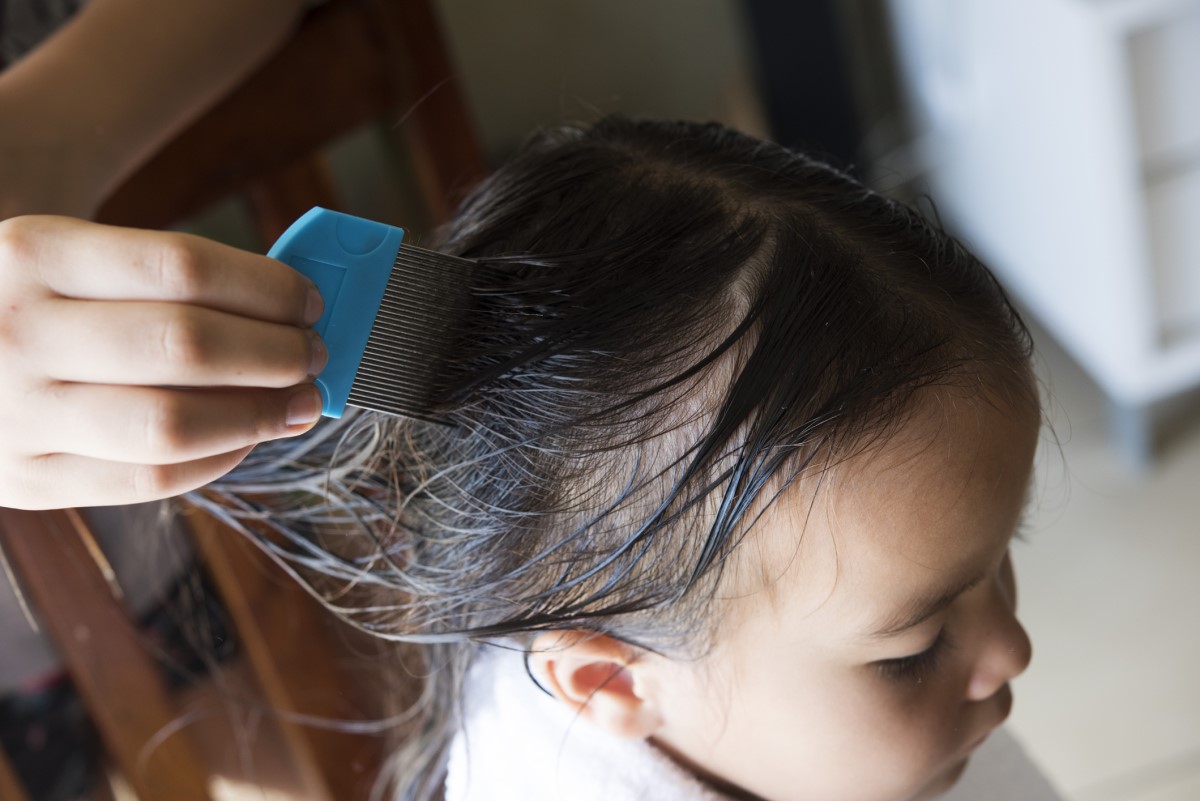
The table lists what is effective and ineffective for head lice
| Effective | Ineffective |
| Olive and almond oil | Kerosene |
| Vinegar (vinegar packs) | Hair dryer |
| Tea Tree oil | Alcohol |
HERBAL TREATMENT
- Insecticide - bark of quassia bitter (Surinam bitterwood) or common wrack. Prepare a double-strength decoction (boil for 20 minutes), mix a cup of decoction with a regular dose of conditioner and use to rinse your head after shampooing.
OIL MIX
- alcohol
- sunflower oil
- tea tree oil
In a bowl, mix the ingredients in the following proportions: 3 tablespoons of sunflower oil, 2 tablespoons of alcohol (e.g. vodka, plum brandy or other pure alcohol can be used) and a few drops of tea tree oil.
Put plastic gloves on your hands (a plastic bag will also do). Apply the mixture carefully to your hair. Rub the mixture into your hair in the same way as you would shampoo your hair.
Keep doing this until you have all the mixture in your hair.
Then cover your hair (and ears) with cling film. Place an old towel over the cling film to prevent the mixture from getting into your eyes. Leave the cling film on for at least 90 minutes. The maximum time is 120 minutes.
After applying the wrap, remove everything from your head and wash your hair with regular shampoo. It's a good idea to wash your head twice so your hair doesn't get greasy.
For medium length hair, we recommend using a double dose: 6 cl of sunflower oil, 4 cl of alcohol and a few drops of tea tree oil.
AROMATHERAPY
- To kill lice and relieve itching - To a teaspoon of unscented body lotion, add two drops of eucalyptus oil and one drop each of lavender and geranium oil. Massage the mixture into the scalp and leave it on for half an hour. Comb through hair with a thick comb before washing. Then rinse the oil out thoroughly and rinse hair.
- Antiseptic Solution - Add two and a half teaspoons of vinegar and two drops each of eucalyptus, lavender, rosemary and geranium oils to a cup of water. Rinse the scalp and let it dry. Repeat the process daily.
- Prevent infection - Put six drops of thyme oil and six drops of rosemary oil in half a litre of lukewarm water.
Is there an effective prevention?
There is also a preventive spray on the market that contains a repellent ingredient and essential oils and protects against parasites for up to 24 hours.
Particularly in school settings, it is important to change personal and bed linen frequently, keep the clothes cupboards tidy, clean combs, brushes, towels, sweatshirts, hats and scarves.
Each member of the collective must use their own personal hygiene items (towel, comb) and headgear.
Nits and lice are also removed in the home environment by a number of people using various 'guaranteed recipes'. Some work more, others less.
How it is treated: Pediculosis - lice
How is pediculosis treated? Medication, shampoo, brushing
Show morePediculosis is treated by
Other names
Interesting resources
